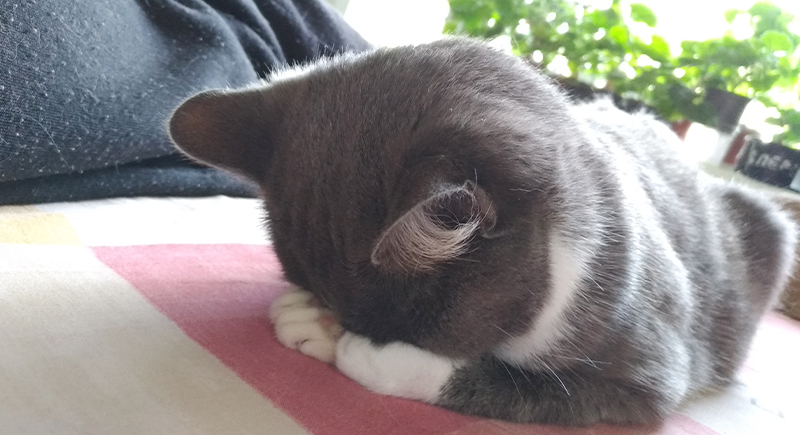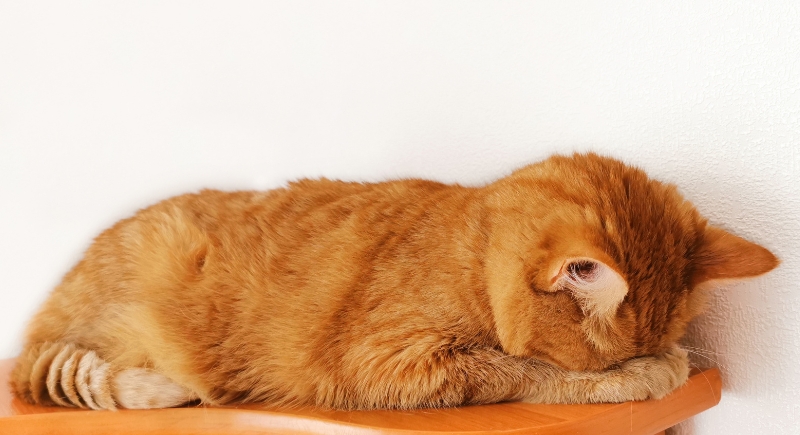What It Means When Your Cat Sleeps in a Face-Down Position
Finding your cat sleeping face-down can look odd, especially if you’re used to the curled-up ball or loaf positions. But for most cats, it’s nothing to worry about. This posture often means they’re relaxed and feel safe enough to let their guard down. While this way of sleeping is often harmless and linked to feline ease, there are rare cases where it may signal a medical concern. The key is paying attention to context, history, and other signs.
Many Cats Find the Position Physically Comfortable

Image via iStockphoto/Daria Chernoknyzhna
Cats often sleep in ways that look awkward to humans, but that has more to do with feline anatomy than odd behavior. Their skeletal flexibility allows them to rest in tight or twisted postures without discomfort. Sleeping face down may simply feel comfortable for them. The angle can support the neck or offer soft pressure around the face, which some cats seem to enjoy.
While no scientific research fully explains this preference, long-term cat owners often notice it early in a cat’s life. The habit tends to stay consistent over time. If a cat routinely buries its head while sleeping and shows no signs of distress or behavior change, this is likely just one of their preferred ways to rest. It does not require correction, intervention, or concern unless something else seems off.
Some Cats Use It to Block Out Light and Sound
Face-down sleeping can function as a sensory break for cats. Unlike humans, cats don’t have hands to shield their eyes or ears. Pressing their face against a surface may help them reduce light, sound, or nearby activity during sleep.
The position helps cats relax more deeply. The instinct likely developed to support uninterrupted rest in mildly disruptive surroundings. It’s also common in cats that seek out quiet, enclosed places to sleep. These individuals may burrow into blankets, lie face-down on soft bedding, or curl into tight corners. This isn’t a sign of fear or illness. Rather, it reflects a preference for physical stillness and sensory control during rest. As long as the cat remains healthy and alert outside of sleep, the action is considered typical.
Face-Down Sleep May Relate to Scent-Marking Behavior

Image via Canva/Irina Anashkevich
We all know that cats use scent as a major form of communication. They have scent glands located around their cheeks, forehead, and chin. These glands release pheromones that help them mark objects as familiar or safe. This is why dozing off face-down could be a way for cats to leave their scent on surfaces they’ve claimed.
This theory is not confirmed by research, but it fits with other scent-related instincts. For example, cats commonly rub their face on furniture, shoes, or legs to distribute scent. Sleeping with their face pressed into a cushion or blanket may serve a similar function. It subtly reinforces territory ownership. This action doesn’t indicate dominance or anxiety. Instead, it likely provides the cat with reassurance in its environment.
If a cat often returns to the same sleeping location and appears relaxed during and after sleep, scent marking may play a role. No action is needed when the behavior remains consistent and part of an otherwise calm routine.